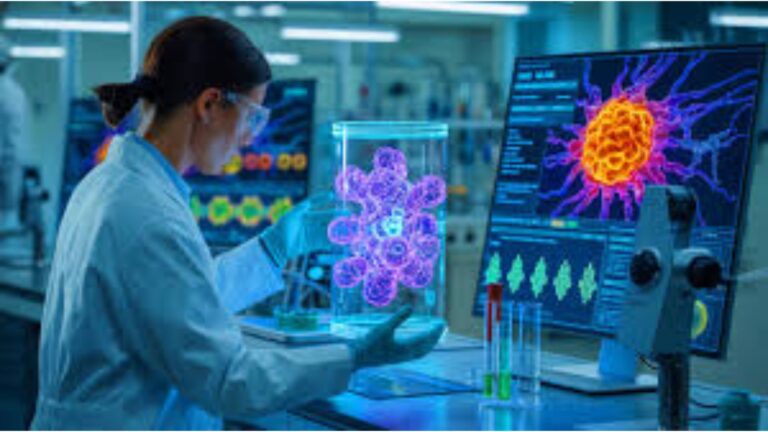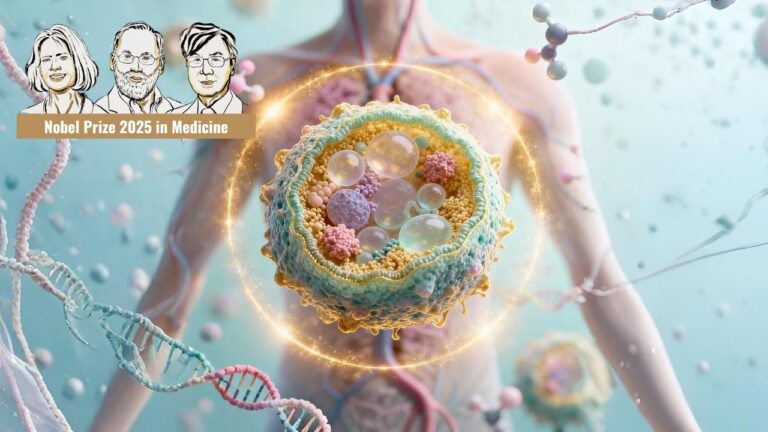
The 2025 Nobel Prize in Physiology or Medicine shines a light on one of science’s most fascinating mysteries: how the immune system knows when to attack and when to stand down. This year’s award honors Mary E. Brunkow (USA), Fred Ramsdell (USA), and Shimon Sakaguchi (Japan) for discoveries that revealed how our body’s defense system maintains balance, and why it sometimes turns against us.
What Did the Nobel Winners Discover?
The immune system protects us from countless bacteria, viruses, and other microbes each day. It is smart enough to distinguish between the body’s own healthy cells and invading threats. But how does it avoid mistakenly attacking its own tissues?
For a long time, scientists thought the thymus (an organ behind the breastbone) was solely responsible for making sure immune cells, known as T cells, passed a sort of “identity test.” Those failing the test were eliminated, a process called central tolerance. Yet, this explanation turned out to be incomplete.
In 1995, Shimon Sakaguchi challenged the prevailing wisdom. He discovered a special class of immune cells, now known as “regulatory T cells” (Tregs), that function as security guards, suppressing immune responses against the body’s own tissues. In simple terms, these cells tell potential troublemakers within the immune system to “calm down” and prevent friendly fire.
Building on this, Mary E. Brunkow and Fred Ramsdell discovered that a particular gene, FOXP3, is crucial for the development and function of these regulatory T cells. They observed that mice with mutations in this gene suffered from severe autoimmune diseases, and the same gene was implicated in rare human autoimmune disorders. By the early 2000s, the pieces fit together: the existence of regulatory T cells and the importance of the FOXP3 gene created a new understanding of how immune tolerance is maintained in the body.

Why Are These Discoveries Important?
Without regulatory T cells, the immune system would often attack the body’s own organs, leading to autoimmune diseases like type 1 diabetes, multiple sclerosis, and rheumatoid arthritis. The trio’s work addresses a fundamental question: why do we not all develop autoimmune diseases? These Tregs are the peacekeepers, preventing internal conflicts and maintaining harmony within our bodies.
Medical and Scientific Impacts
Their discoveries created an entirely new field of research, “peripheral immune tolerance.” This field explores how immune responses are governed outside of the thymus and how the immune system’s overreactions can be stopped. The practical implications are vast:
- In autoimmunity, therapies can be developed to boost regulatory T cells to restrain the immune system.
- In cancer, where tumors sometimes use regulatory T cells as a shield, scientists are investigating how to disarm this “protective wall” so the immune system can attack cancer more effectively.
- Organ transplant medicine can benefit as well, helping the body accept new organs and tissues without rejection.

The Laureates and Their Journey
- Mary E. Brunkow is based at the Institute for Systems Biology, Seattle, USA.
- Fred Ramsdell works at Sonoma Biotherapeutics, San Francisco, USA.
- Shimon Sakaguchi is a professor at Osaka University, Japan.
Though their careers began continents apart, the pieces of their work fit together like a puzzle, each advance making the next one possible. The Nobel Assembly describes their findings as “decisive for our understanding of how the immune system functions and why we do not all develop serious autoimmune diseases”.
Looking to the Future
The Nobel Prize in Physiology or Medicine 2025 has opened new avenues for treating human disease. Many new therapies based on boosting or calming regulatory T-cell activity are already underway or in clinical trials. The discoveries herald the possibility of taming some of the most challenging diseases of our time, autoimmunity, cancer, and transplantation rejection.
In the bigger picture, the story of Brunkow, Ramsdell, and Sakaguchi is a reminder of science’s power: when persistent, creative minds pursue answers together, the rewards can transform millions of lives. This Nobel Prize will likely keep giving as researchers build on this knowledge to design better and more targeted therapies for a healthier future.






